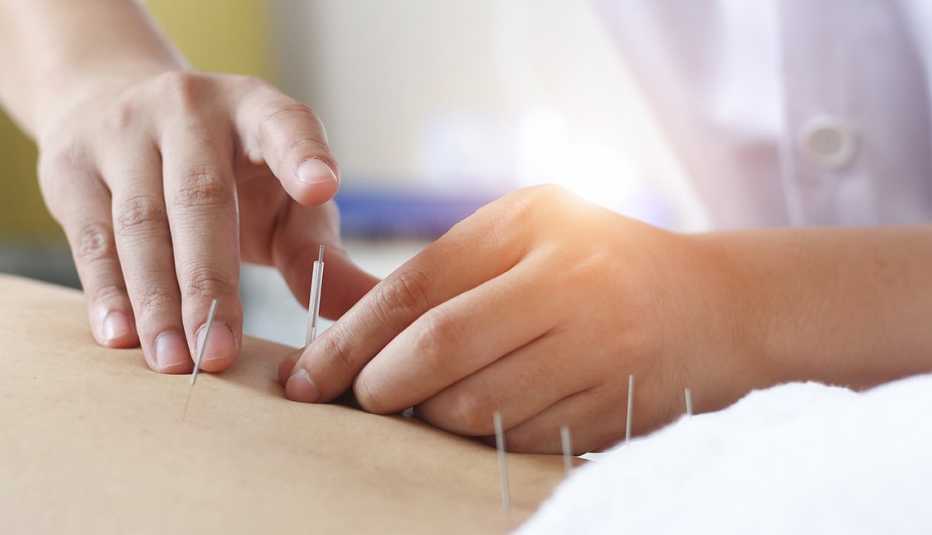AARP Hearing Center


You may have heard the news that Medicare will soon offer coverage for acupuncture treatments for lower back pain — up to a maximum of 20 such sessions in a year, potentially, for those whose pain isn't related to another health problem or recent surgery.
This alternative medicine approach is part of Medicare's effort to combat overreliance on opioids and to prevent the use of more invasive procedures. But if you're wondering whether you should get on the table yourself, read on for what's involved and how experts say a session may, in fact, help your aching back.
The Eastern (and Western) view of the practice
The practice of acupuncture — used on all kinds of ailments — dates back thousands of years in traditional Chinese medicine and is based on the belief that energy in the body flows along pathways, called meridians. Blockages to this flow, the thinking goes, cause illness, while inserting hair-thin needles into the body at specific points ("acupoints") along these pathways can unblock and restore the body's balance and energy flow.
Western medicine explains acupuncture as a possible stimulant to the nervous system, signaling the body to release things such as endorphins, immune system cells, opioids, neurotransmitters and neurohormones, which help to restore physical and emotional wellness. There is also evidence that acupuncture may influence involuntary central nervous functions, such as blood pressure, blood flow and the body's temperature regulation, notes Joseph Audette, M.D., an assistant professor at Harvard Medical School. His own research indicates “acupuncture may have some influence on reducing normal brain response to chronic pain.” When the body experiences chronic pain, he explains, the central nervous system becomes sensitized, sometimes reacting to stimuli that are no longer actually there. “Acupuncture can reverse that.”
Other studies suggest a placebo effect from acupuncture, indicating that our own mind — convinced the procedure is working — dials down the pain signals on its own.

































































More on health
7 Habits Causing Your Lower Back Pain
Making a few tweaks to your routine (or diet) might alleviate lots of discomfortHow to Improve Your Posture
Why you're slouching more than you used to — and how to give that hunch the heave-hoThe Depression-Chronic Pain Link
Science is showing that treating these two conditions together can bring relief